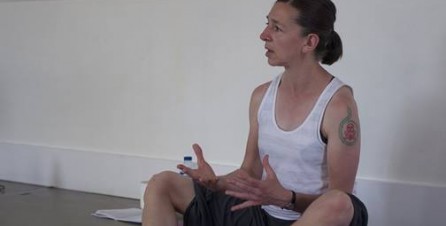Getting It Together: Yoga For Newcomers
It may be that you have joined a yoga class to get fit. This is the first step onto the mat for lots of people these days, and like all beginnings it is a worthy one. If you continue to practise regularly, however, you will begin to notice that while you may be experiencing benefits to your general fitness, there is also something bigger, deeper and more mysterious going on.
The Sanskrit word yoga is usually translated as ‘union’. BKS Iyengar (one of the great modern teachers and practitioners of yoga, and the founder of the Iyengar yoga system) describes this as ‘integration’; in other words, accepting and owning all the parts of ourselves. In the context of yoga, this integration is not only personal but also transpersonal: it entails experiencing and embracing our part in the universe, and experiencing the numinousness of that whole, which includes us and is so much bigger than us.
It’s important to understand that the physical postures of yoga are just a scaffolding. They are not themselves yoga. Yoga is the process of whole-person awakening that happens through engaging mindfully with the scaffolding of the postures. ‘Mindfully’ means that you notice what you are experiencing as you move through the postures, being aware of sensations, emotions, thoughts, energy moving, memories arising … and, just noticing, let them be.
Every yoga class should really come with a big bold WARNING sign and a lot of exclamation marks. Yoga is a dangerous practice. If you practise regularly and sincerely, it will transform your life from the roots up. You may be impelled to change anything and everything from your diet through your closest relationships, your job, where you live, and what time you go to bed and get up in the morning. The physical alignment you have been working with in trikonasana, parsvakonasana and all those other postures with difficult Sanskrit names are practice for this. You are being drawn into alignment with your truest purpose in life. There is often discomfort, confusion and a sense of disorientation in realignment. You will probably be familiar with this from your yoga class too. Transitions like this are not always easy or welcome. Many people stop practising yoga when they begin to feel the pull to shift position in this way. Ultimately, however, you are being moved towards your greatest integration, health and well-being.
Our ability as yoga practitioners is marked not by whether we can sit in lotus position or stand on our head for ten minutes, although working towards these things may be part of the scaffolding, but by our capacity for engaging with these transitions kindly and steadfastly, offering compassion to all our human silliness, and patience to our reluctance. Mr Iyengar says:
Yoga allows you to rediscover a sense of wholeness in your life, where you do not feel like you are constantly trying to fit the broken pieces together. Yoga allows you to find an inner peace that is not ruffled and riled by the endless stresses and struggles of life. Yoga allows you to find a new kind of freedom that you may not have known even existed … Ultimately … there is a serene core of one’s being that is never out of touch with the unchanging, eternal infinite. (Light on Life, xiv)
Good luck with your practice.
Light on Life, BKS Iyengar, Rodale, 2005

